To know more about control effects and the legend rule we will meet the magnificent vampire Olivia Voldaren. Would you like to grab a drink?
— Hi. Is there an Olive here?
— There’s a whole jar of them in the fridge.
“Easy A”
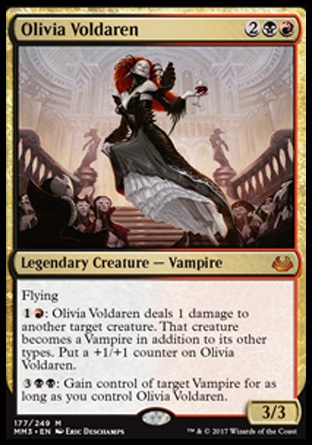
Oracle Text:
Legendary Creature — Vampire
Flying
{1}{R}: Olivia Voldaren deals 1 damage to another target creature. That creature becomes a Vampire in addition to its other types. Put a +1/+1 counter on Olivia Voldaren.
{3}{B}{B}: Gain control of target Vampire for as long as you control Olivia Voldaren.
Olivia Voldaren has two colors in her manacost: black and red.
Therefore, she is both black and red — not golden, there is no such color in Magic. As she has two colors, she is multicolored.
- You can exile Olivia to pay for Blazing Shoal’s alternative cost.
- Olivia is an illegal target for Strafe and Doom Blade.
- If you sacrifice Olivia to pay for Lyzolda, the Blood Witch’s ability, when it resolves Lyzolda deals 2 damage and you draw a card.
- Glittering Wish can get Olivia.
Olivia Voldaren is a legendary creature. Let’s talk about legends for a while and discuss the rules’ change.
Legend Rule
— How many legendary cards can be in a deck?
—As many as you want. However,if you’re playing a constructed tournament, you can have a maximum of 4 cards with the same English name (it also applies to all other cards except for basic lands). If it’s a limited tournament, there are no restrictions — of course, all the cards must come from your limited pool. Some formats apply additional restrictions, you can learn about them by reading those formats’ rules.
— How many legendary permanents can be on the battlefield under one player’s control?
—As many as you want, but they all must be different. There is a special card based on the amount of legendaries you have on the board: Heroes’ Podium.
There is a “rule of legends” for legendary permanents with a same name:
704.5j. If a player controls two or more legendary permanents with the same name, that player chooses one of them, and the rest are put into their owners’ graveyards. This is called the "legend rule".

If a cunning opponent’s Olivia Voldaren enters the battlefield, both you and your opponent will each have Olivias. If you activate third ability of yours Olivia and take the opponent’s Olivia, you have to choose which stays and which goes to owner’s graveyard.
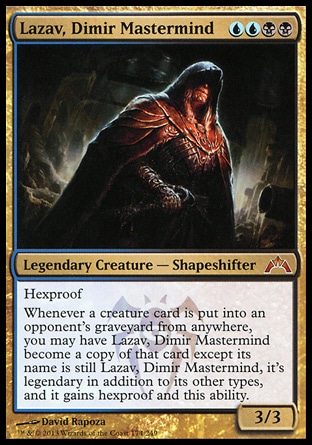
Lazav, Dimir Mastermind doesn’t change its name when it copies a creature (as defined by the copying effect). That is why if there are Olivia and Lazav copying Olivia under one player’s control, the “legend rule” doesn’t affect them: both stay on the battlefield.
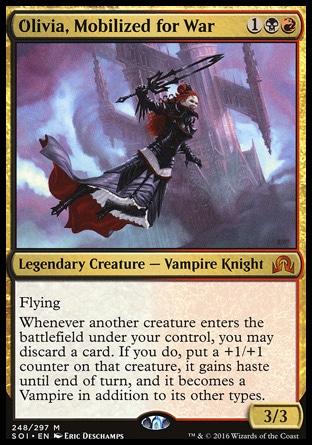
Olivia Voldaren and Olivia, Mobilized for War represent the same Magic character, but have different names. You can control bouth of them. The “legend rule” doesn’t apply
From Ixalan set all Planeswalkers get supertype Legendary and they are effected by “legend rule” now.


An ordinary basic land enchanted by Genju of the Realm gets the “legendary” supertype when Genju’s activated ability resolves. The “legend rule” doesn’t apply to this legendary land and a basic land with the same name.
— Can two players control legendary permanents with the same name?
— Yes. This is the main difference between the old and new rules. Now, when a legend enters the battlefield, it’s important who controls the permanent.
Assume you and your opponent both control an Olivia. If you activate your Olivia’s third ability and steal the opponent’s one, you have to choose one of them. The second goes to its owner’s graveyard.
If an opponent’s Phyrexian Metamorph enters the battlefield copying your Olivia Voldaren, both you and your opponent control an Olivia. If you control the Metamorph entering the battlefield, you can choose which Olivia stays in play.
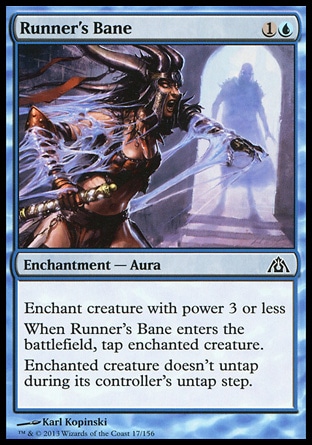
If a cunning opponent enchants your Olivia with Runner’s Bane, by playing another Olivia you can put the enchanted one in the graveyard and have the non-enchanted stay on the battlefield.
— Will EtB-abilities of legend permanetnt triggers before I put one of them to graveyard?
— Yes. When permanent enters the battlefield, first all EtB-abilities trigger, then SBA are checked ( “legend rule” is one of them) and the choosen legend goes to the owner’s graveyard. Then triggers go on the stack and wait for resolution.
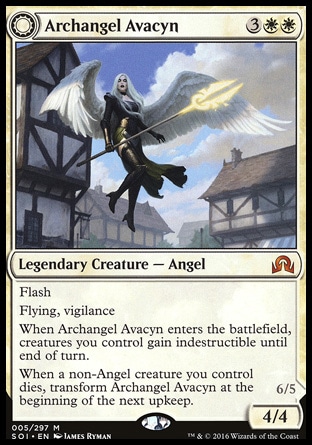
When the second Archangel Avacyn enters the battlefield under you control, its ability triggers. Applying the “legend rule” you will put one of Avacyns to the graveyard. Then the trigger goes to stack. (Do you know that ability exists on the stack independently of its source?) During resolution of tht trigger all creature your control gain Indestructible until end of turn.

When the second Olivia, Mobilized for War enters the battlefield, the ability of the first Olivia triggers. Then SBA are checked and if you decided to keep only the second Olivia, when trigger resolves you can choose to discard a card and put a +1/+1 counter on the Olivia and give her Haste until end of turn. Note, that you choose discard a card or not only at trigger resolves.
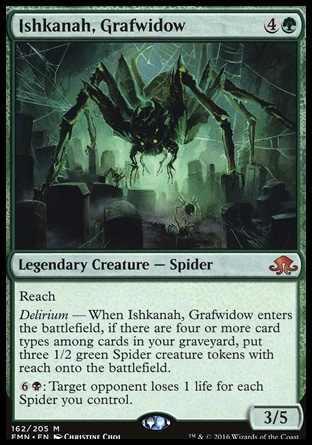
If the second Ishkanah, Grafwidow enter the battlefield under your control and you have in graveyard only 3 card types and none of them are creatures, the ability won't trigger. Because one of Ishkanah goes to the graveyard only when SBA will be checked. If Ishkanah enters the battlefield and your you have 4 card types in th egraveyard, the ability triggers and will bring you Spiders as resolves. Of course, if the condition will be still true.
— What happens with legend's static abilities?
— They both will function from the moment when the second legend enter the battlefield to SBA perfom.
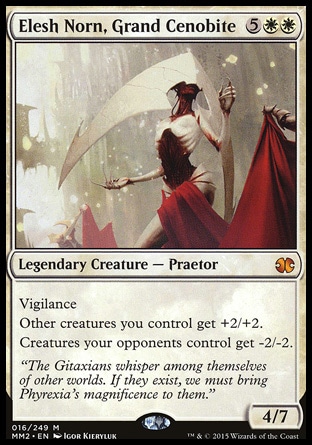
If you control Elesh Norn, Grand Cenobite and cast the second one, then your opponent isn't very lucky guy.
Static ability of Elish Norn start to apply as soon as it appeared on the battlefield, all creatures opponent contorl suddenly get -4/-4.
Since all SBA run at the same time, those creatures whose toughness was zero or less, go to the graveyard simultaneously with one of Elish Norn of your choice.
When studying legends, we can’t avoid mentioning cards which allow us to ignore the “legend rule”::

Firstly, there’s Mirror Gallery, which disables the “legend rule” for all permanents.


Secondly, there are Brothers Yamazaki, which can co-exist with each other under one player’s control despite being legendary. However, if three (or more) brothers are on the battlefield under one player’s control, the “legend rule” applies to all of them.


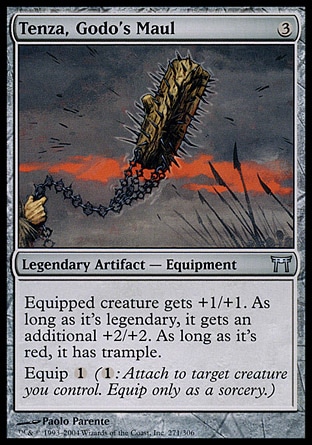
There are cards that deal only with legendary objects or give additional perks if the object is a legend.
These cards mainly are played in Commander (EDH), where legends (for instance, the General) are pretty important. Some of them, though (for example, Karakas) are played in eternal formats and cost a lot of money.
The last notice about legends in general before we go back to Olivia Voldaren – on some of the legendaries there are contracted names of these cards. This happens if the text refers to the name of the card for the second (and the following) times. The legend is refered to by its full name for the first time. Contracted names are equal to full names in this case.
According to IPG, players can use contracted names of characters (legendary cards and Planeswalkers) if there are no more such cards with the same contracted name in the format. These contractions are considered to be referring only to those characters, even if there are cards beginning with the same name in the format.
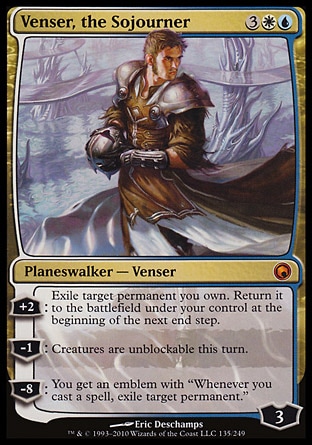
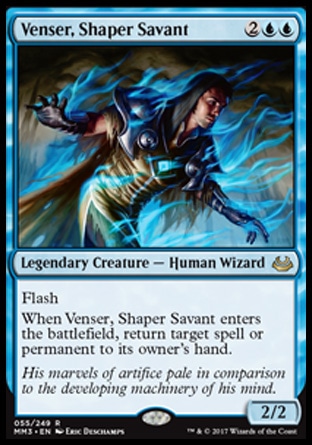
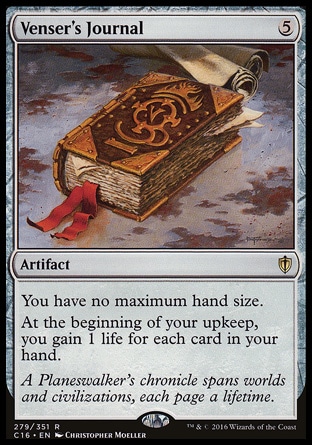
If you are playing block-constructed Scars of Mirrodin, then “Venser” in your decklist is possible and it means that you have Venser, the Sojourner.
If you are playing block-constructed Time Spiral, then “Venser” in your decklist is also possible and it means that you have Venser, Shaper Servant.
In neither of those cases can Venser be Venser's Journal.
If you’re playing a Legacy tournament, there can’t be a “Venser” in your decklist — there are two different cards that “Venser” can refer to. If you use such contraction, your decklist is illegal and you will get an appropriate penalty (on CREL it’s a Game Loss).
And for the last thing — both of those Vensers can be on the battlefield under one player’s control. Both of them are legendary, but they have different names, which means that the “legend rule” doesn't apply.
Olivia Voldaren has three abilities. The first is static, and the other two are activated.
Flying is an evasion ability. Such abilities limit what creatures can block the attacking creature. A creature with Flying can be blocked only with creatures with Flying or Reach. A creature with Flying can block a creature without Flying (if the opposite isn’t stated: Skywinder Drake).
If a creature gained or lost Flying after the blockers are declared, nothing changes. Flying doesn’t change the damage assignment. It only defines if a creature can be assigned as a blocker during the declare blockers step. For example, Flash Foliage’s token can block creatures with flying because it was never assigned as a blocker, but entered the battlefield as a blocker.
If a creature gained several Flying abilities, the “extra” ones are simply ignored.
Olivia Voldaren’s second ability is targeted. It has a limitation: you can’t target Olivia itself. However, if there is another Olivia on the battlefield, one Olivia can target another with this ability.
As you already know (I honestly want to believe that), an activated ability doesn’t depend on its source. That’s why when Olivia’s second ability resolves, if Olivia isn’t on the battlefield, the most possible instructions of the ability are performed: target creature is dealt 1 damage, becomes a Vampire in addition to its other creature types. As Olivia isn’t there, you can’t place a counter. That instruction is simply ignored.
Even if Olivia Voldaren doesn’t deal any damage (for instance, it gets redirected or prevented), everything else happens: target creature gets a Vampire subtype and Olivia – a counter.
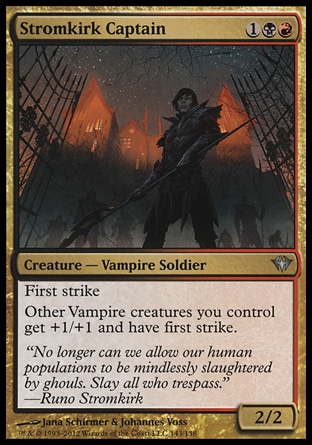

If a creature (for example, Dark Confidant) is dealt leathal damage, first it becomes a Vampire (due to Olivia’s effect), and only then goes to graveyard due to SBA check.
If this is your creature, you can’t do anything (like sacrifice or tap) with this Vampire, as SBA are checked before anyone gets priority. However, triggered abilities like one of Kalastria Highborn do trigger.
If you control Stromkirk Captain, as soon as your Dark Confidant becomes a Vampire, it gets
+1/+1, and therefore survives SBA check (as it is a 3/2 with 1 damage).
Since the effect of Olivia-Voldaren’s second ability gives target creature a Vampire subtype in addition to its other types, the creature doesn’t lose its other types.
If an animated (due to its third ability) Gideon Jura became a target of Olivia Voldaren’s second abilty, which has resolved, he gains an additional subtype – Vampire. This effect doesn’t have an “expiration date” and doesn’t depend on Olivia’s existence. So it works until the game ends or until some other effect changes Gideon’s (sub)type. Learn more about type changing.
When Gideon’s animation effect ends, subtypes not connected to current permanent type cease to exist. For example, if Gideon is affected by any other effects, he returns to his original state and his type string looks as follows: “Planeswalker - Gideon”.
When you activate Gideon’s third loyalty ability for the next time, Jura will be affected by two effedcts: one from Olivia Voldaren’s ability and one from Gideon’s own ability. Since those are independent and are on the same layer (layer 4), Olivia Voldaren’s effect is to be applied first. However, it doesn’t do anything, as Gideon is not a creature yet. After that the effect of Gideon’s ability is applied, and he becomes a “Planeswalker Creature – Gideon Human Soldier”.
If target creature became an illegal target when ability started resolving (for example, gained Protection from Creatures or Hexproof), the ability is countered. Absolutely. No damage, no Vampires and no counters. Nothing happens.
Olivia Voldaren’s third ability is targeted, too. It can target a creature with Vampire subtype. It doesn’t matter who controls the creature.
When Olivia’s third ability resolves, you gain control of target creature. This effect exists while you control Olivia Voldaren. You can lose control in two ways: your cunning opponent can borrow Olivia or she dies. In any case, when it happens, all creatures you stole with Olivia’s third ability go back under their previous masters’ control. Most of the time previous controller is the owner of the card, but sometimes there are other control-changing effects in play. It happens in multiplayer games most often.
If you activated Olivia Voldaren’s third ability and Olivia changed control or left the battlefield when the ability hasn’t resolved yet, the ability resolves, but does nothing. You won’t gain control of target Vampire.
Returning Olivia under your control doesn’t return you the effect of her third ability.
It also doesn’t matter if you control another Olivia Voldaren (if you somehow avoided the “legend rule”). It doesn’t affect the effect of the first Olivia. For her third ability only the control of the exactly the same Olivia that created the effect matters. It doesn’t matter how she is called at the moment or which permanent she is:

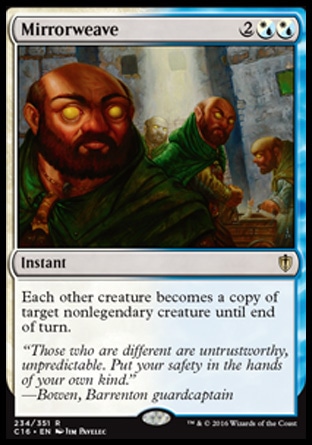
If your cunning opponent, who is, though, not so good at rules, cast Mirrorweave targeting Bear, he doesn’t get his creatures back despite all his hopes. In this case it’s important that you control the exact object, but not what the object looks like.
Exactly the same is true for a creature which changed control. You control it even if it turns into a pumpkin, if you control Olivia.
A creature that changes control doesn’t leave the battlefield. It doesn’t lose or gain any abilities, with the exception of those abilities that are granted by effects under one player’s control. It doesn’t lose counters it has.
If it doesn’t have Haste, it can’t attack immediately. You also can’t activate its abilities with the tap (or untap) sign in their cost. This is due to the fact that the so-called “summoning sickness” isn’t connected with summoning, but is connected with control of the permanent:
302.6 A creature's activated ability with the tap symbol or the untap symbol in its activation cost can't be activated unless the creature has been under its controller's control continuously since his or her most recent turn began. A creature can't attack unless it has been under its controller's control continuously since his or her most recent turn began. This rule is informally called the "summoning sickness" rule. |
When the controller changes, the permanent loses this “continuous control”. That’s why it doesn’t matter if it’s been on the battlefield for a long, long time, It’s important that it changed control.
Auras and Equipments stay attached to the creature, but their controller doesn’t change. For some Auras, though, change of control leads to disattachment and they go into the graveyard.
When a control-changing effect appears, questions connected to the effects’ text arise.
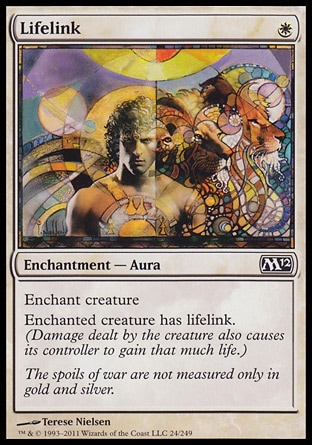
If a borrowed creature has Lifelink, now you get to gain life, not its previous controller.
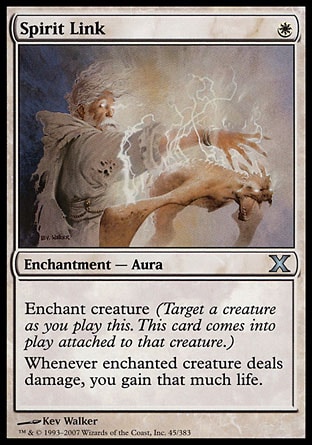
If you stole a creature enchanted with Spirit Link, then as your opponent still controls the aura, they gain life when the trigger resolves.
If you stole your opponent’s creature that has a spell with Cipher encoded on it, you control the Cipher trigger. You also get the opportunity to cast a copy of the ciphered spell.

If you borrowed a creature equipped with Sword of Body and Mind and attacked your opponent with it, and the creature dealt damage, the Sword’s second ability triggers. Notice that as the Sword is controlled by your opponent, they control the trigger. Consequently, “you”in the text refers to the opponent. And so they get the Wolf token.
Words “that player” refer to the player who was dealt damage by the creature equipped with the Sword, and this is also your opponent. Therefore, he mills 10 cards.
As Olivia herself is a Vampire, you can target her with her third ability. Why would you need that?

If you stole opponent’s Olivia with Act of Aggression and then resolved Olivia’s third ability targeting her, you control Olivia until she gets stolen or dies.
Despite the fact that Act of Aggression’s effect ends at the end of turn (in the cleanup step), the effect of Olivia’s third ability says that you control Olivia while… you control Olivia. Sounds strange, but that’s how it works.
Of course, Olivia’s second and third abilities work together well. You can turn a creature into a Vampire and then steal it.
For an entertainment I suggest you look at how Olivia was drawn.
There’s also a comic strip for adult readers.
Translated by Witas Spasovski


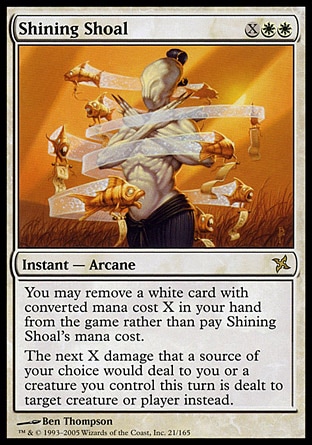
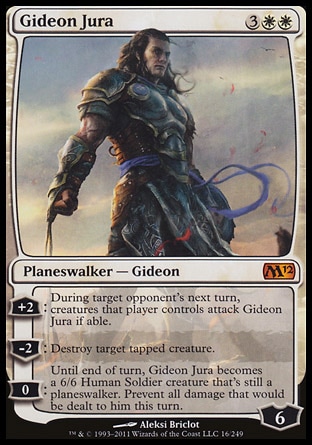
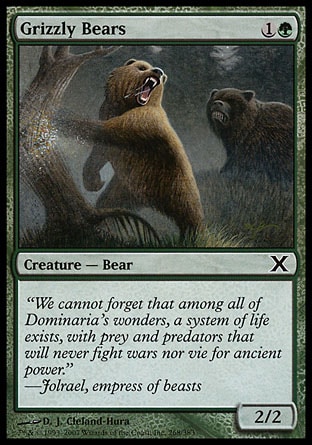
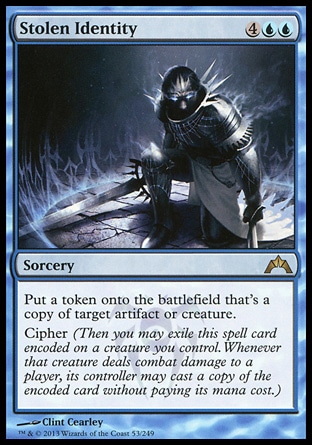
Now you can control both Gideon of the Trials and Gideon, Battle-Forged.